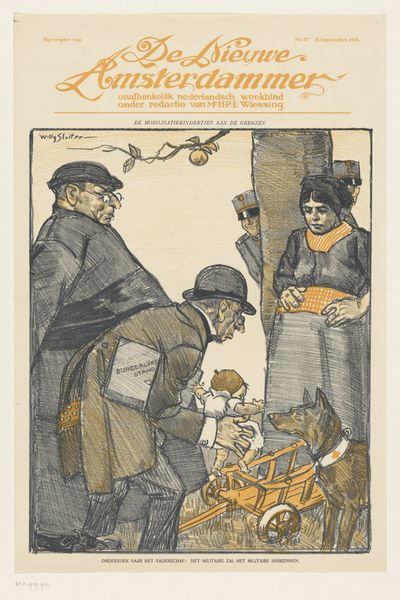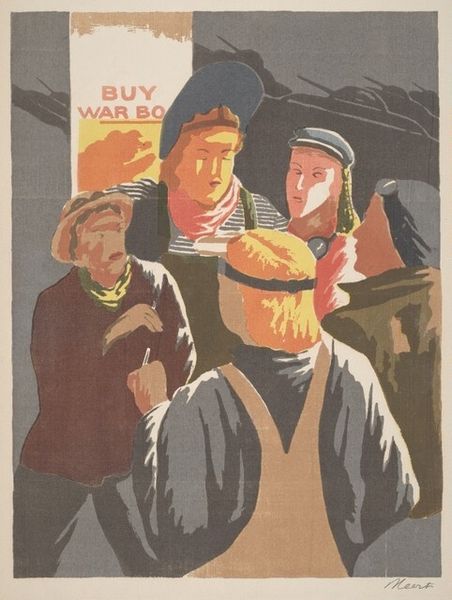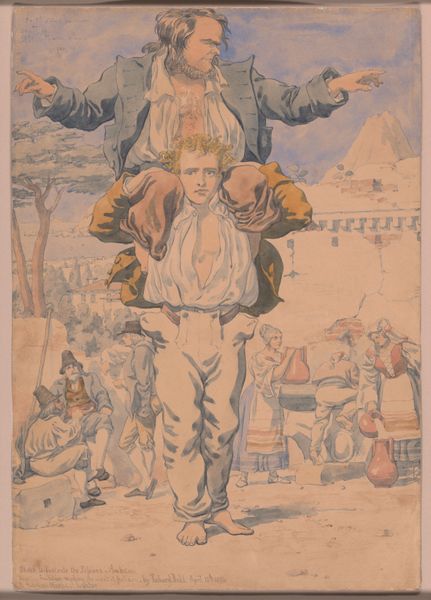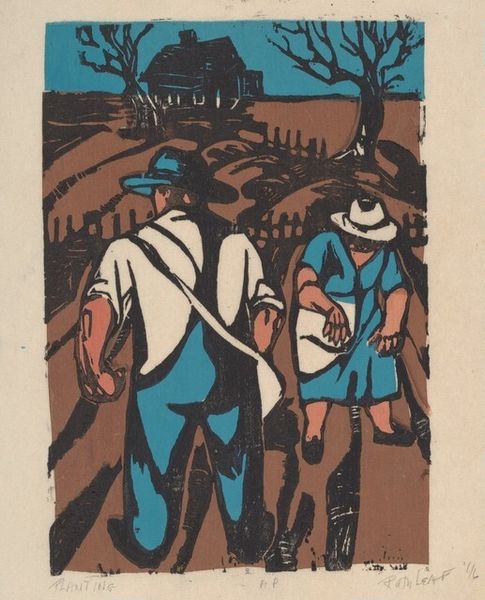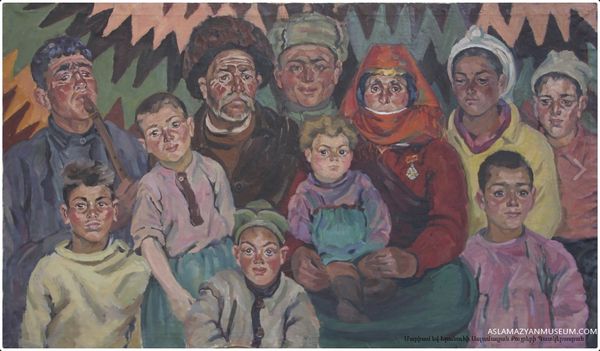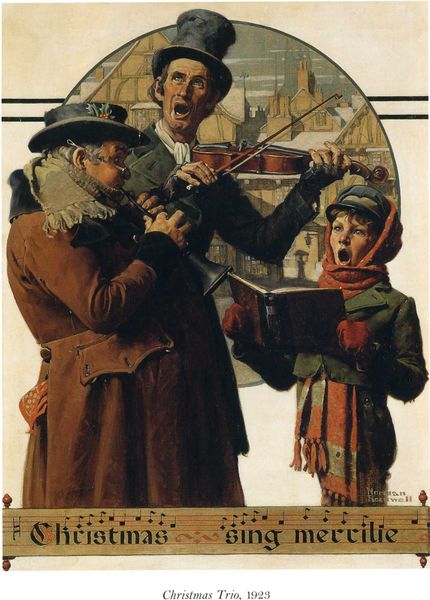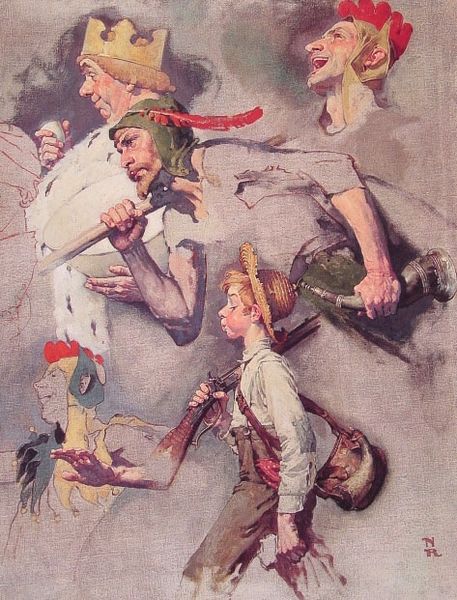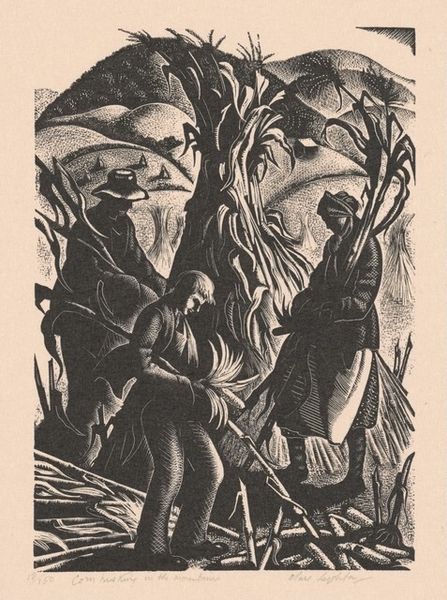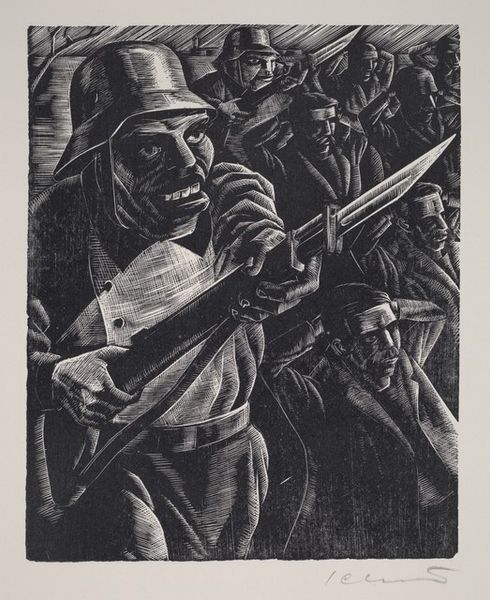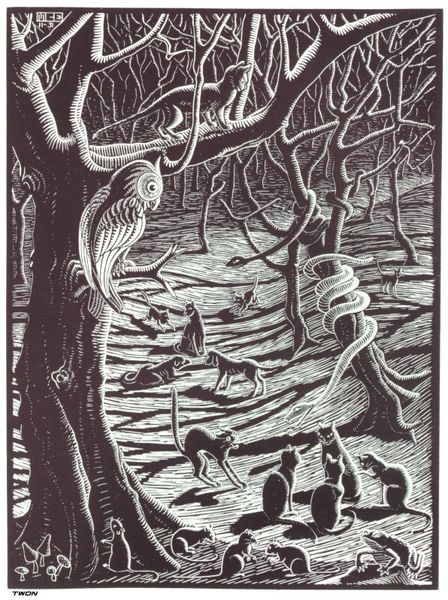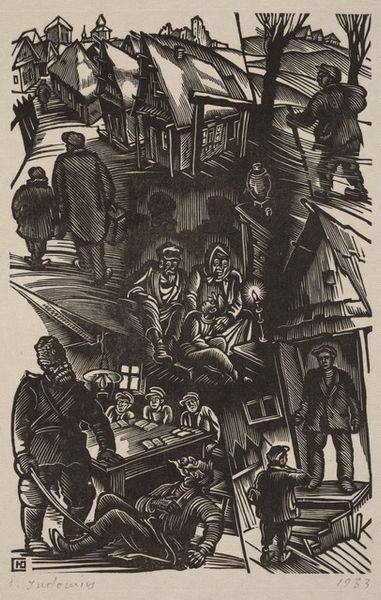
#
narrative-art
# print
#
caricature
#
caricature
#
pop art
#
folk-art
#
naive art
#
genre-painting
#
modernism
Dimensions: image: 574 x 513 mm paper: 762 x 662 mm
Copyright: National Gallery of Art: CC0 1.0
Curator: So, here we have Anton Refregier's print, "Discovery of Gold," created in 1949. It's a powerful example of narrative art rooted in a specific historical context, the California Gold Rush. Editor: Wow, it practically vibrates with a rough-and-tumble energy, doesn’t it? Those bold colours and angular figures—it’s like catching a glimpse of a rowdy folk tale unfolding before you. I almost hear banjo music. Curator: Absolutely. Refregier simplifies the forms into near-caricatures, exaggerating features and postures. The style is deliberate, aligning with social realism prevalent during the mid-20th century and speaks to folk-art traditions as well. Editor: Folk art! Yes, it has that naive quality, like a page torn from a fantastical history book. Though, naive perhaps masks the deliberate social commentary—these guys look so driven, so consumed. Is it glory or madness shining in their eyes? Curator: I agree. There’s an undercurrent of criticism of capitalistic ambition, the blind pursuit of wealth. Consider how the architecture of greed slowly develops throughout these scenes: humble wooden structures in the center yielding into abstract city spaces on the top, each individual searching for new material, for some gold, at any price. Editor: That's an excellent reading! So there's this dance between an almost celebratory depiction and this darker undertone— a warning. A glint of gold, a flash of madness and everything will change. Even for the viewers! Curator: Indeed. By simplifying the narrative into emblematic figures, Refregier makes this a critique that extends beyond the gold rush to broader socio-economic concerns of that time and how such a landscape would change. Editor: Knowing a little bit about the artist gives this work so much more life. Makes you realize history is always someone’s lived story. Well, I'm now dreaming of banjos, gold and perhaps just a touch of healthy cynicism. How about you? Curator: It underscores how images are rarely neutral but deeply embedded within the currents of culture. It prompts questions about who benefits from historical narratives, and what values we project onto our past. This piece certainly challenges a simple, heroic rendering of history, even when looking to the landscapes.
Comments
No comments
Be the first to comment and join the conversation on the ultimate creative platform.
